The in-flight seating experience has been a rollercoaster. First there was luxury, and the high price tag that comes with it, followed by airline cost cutting and increasingly smaller legroom space. By 2019, things had leveled out some — seats were not at their best, but not their worst either. And then the pandemic happened, and flying in a concealed metal tube with two strangers by your side suddenly felt like a dangerous, or at the very least irresponsible, thing to do.

The Newest Airplane Seat Designs, Ranked From Great to Hellish
Airlines tried to compensate by leaving the middle seat empty, but the economics didn’t work out for many companies. Then, one by one, airlines started to require masks during the entirety of flights. Some companies that provide interiors for airlines went a step further by creating entirely new seat concepts.
One designer did some geometric finagaling to position people opposite ways with a plastic shield between them. Another came up with a shield that sits in the middle seat itself and can be taken off once planes finally feel safe again. These latest iterations are part of a long tradition of trying to fix something bad with something that’s been overthought, to use a generous description.
The search for a seat that’s better for both comfort-craving fliers and space-conscious for airlines has gone on about as long as there have been airlines. Meeting in the middle isn’t easy. In a Forbes story called “New Airline Seat Designs? They Won’t Ever Fly On Airplanes,” writer Will Horton lays out the many reasons why you keep sitting in the same broken-in economy seat despite all of the apparent innovation. Flammability tests, force tests, and weight tests all get in the way. The most comfortable seats could fail because regulations require that people can get out in 90 seconds with no lights.
In short, economy fliers are largely stuck with what we have for the foreseeable future. Seats designed for the coronavirus couldn’t be developed and tested fast enough, while seats designed before then have had a hard time being implemented. Though these concepts will more often than not just remain concepts, that doesn’t make them any less fun to think about. Here are six recent seat design concepts, from the COVID-19 appropriate to the space saving, ranked by feasibility, creativity, and comfort.
1. Cocooning privacy dividers
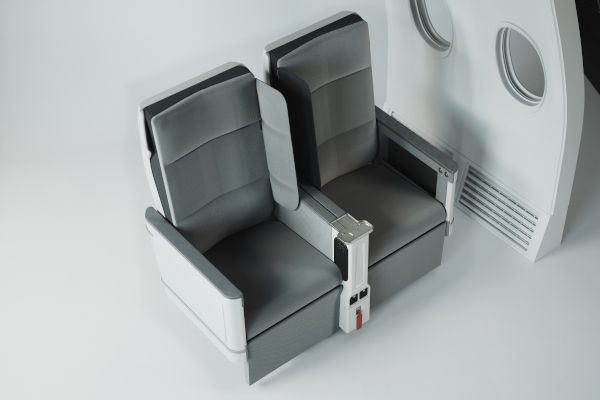
Photo: Safran
The company Universal Movement partnered with airline seat giant Safran Seats to give chairs wings. Not for flying, but for blocking out the person next to you. The dividers fold out from the back of the seat and put up a little barrier between you and the people next to you. It won’t stop any fights for the armrest, but at least it’s easier to avoid eye contact while doing so. Safran says it can be retrofitted onto old seats, so it’s possible for airlines to put them on the pre-existing seats. In terms of over performing simple solutions, it’s hard to beat this. The company also has a more extensive blockade that takes up a middle seat created during the pandemic.
2. Middle seat as barrier
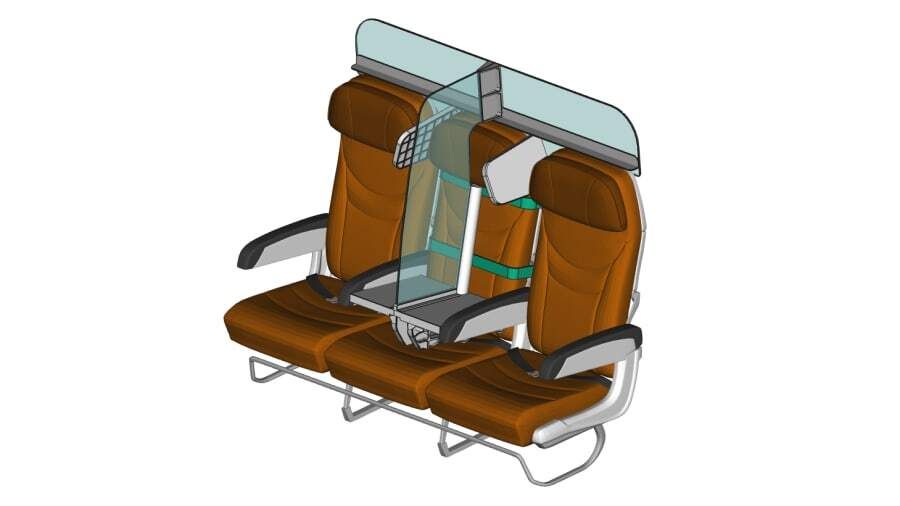
Photo: PlanBay
PlanBay, a side project of the airplane cargo door company EarthBay, came up with a temporary, respiratory droplet-blocking solution to put plexiglass on the middle seat. The divider isn’t as fluid or pretty as the ones from Safran/Universal Movement (and a divider can’t provide the same protection as everyone wearing a mask), but who can argue with taking a person out of the middle seat? The weight and reduced passenger load would likely turn airlines off on the concept, though the dividers are removable so could come in handy when viral waves come and go. Sure, this is explicitly for our current moment, but we personally wouldn’t mind a separator even in the best of times. After all, you never know when a stranger might feel a sneeze coming.
3. The wide middle
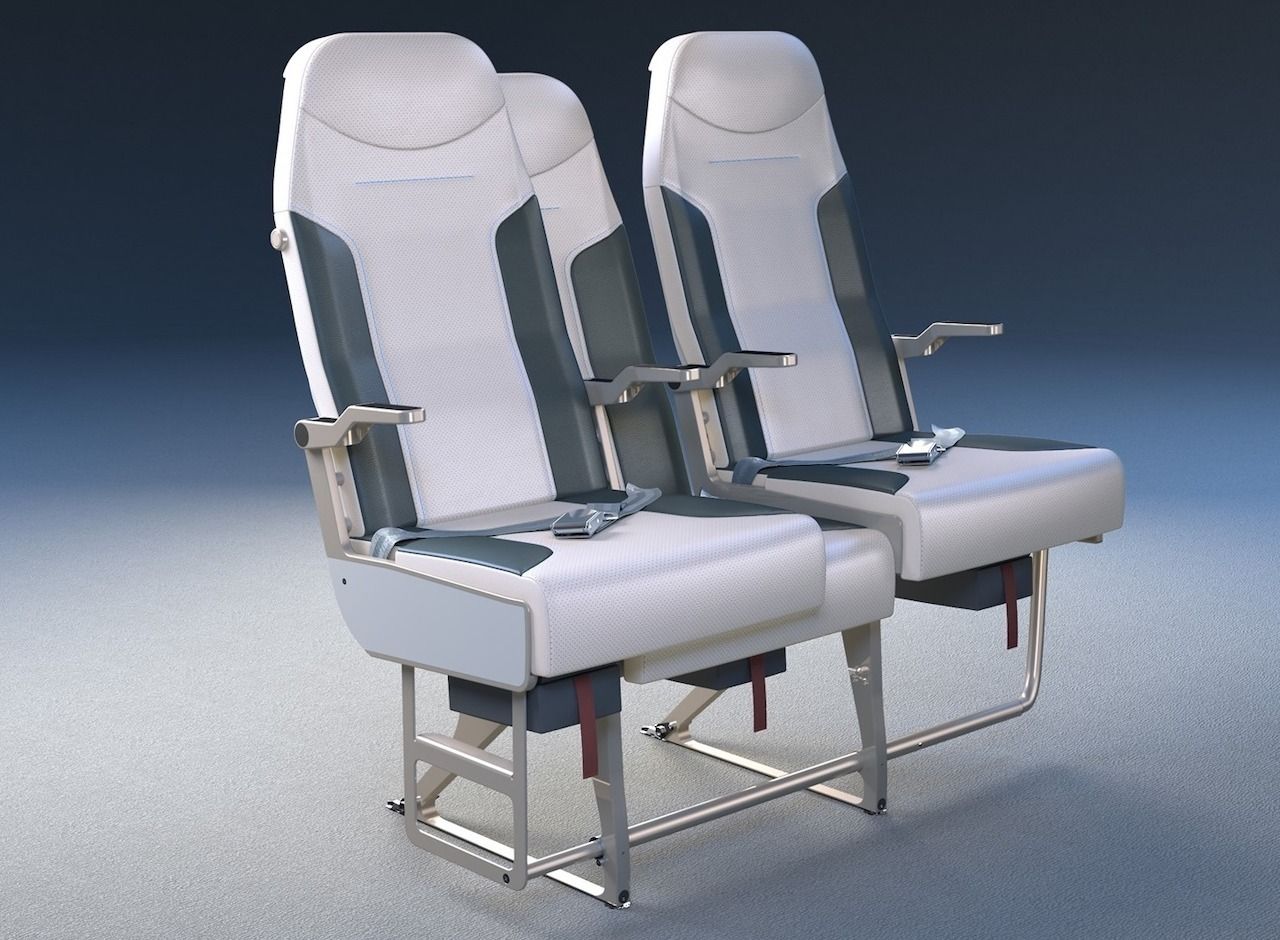
Photo: Molon Labe Designs/Facebook
Space is one of the main reasons no one wants to be stuck in the middle like Malcolm. Denver-based company Molon Labe designed a middle seat concept that makes the middle seat the biggest in the aisle. Dubbed the Side-Slip Seat, it provides just enough extra space to make a difference. The key is a staggered design that pushes the middle seat back a smidge. It’s not just the middle with more room, either. When loading and unloading, the aisle seat can easily slide to the side (hence the name) so that there’s more room for people to get out. Admittedly, it would take some getting used to and would likely take a little longer for the plane to deboard, so airlines might have some qualms.
4. Bunk beds mean more space for activities
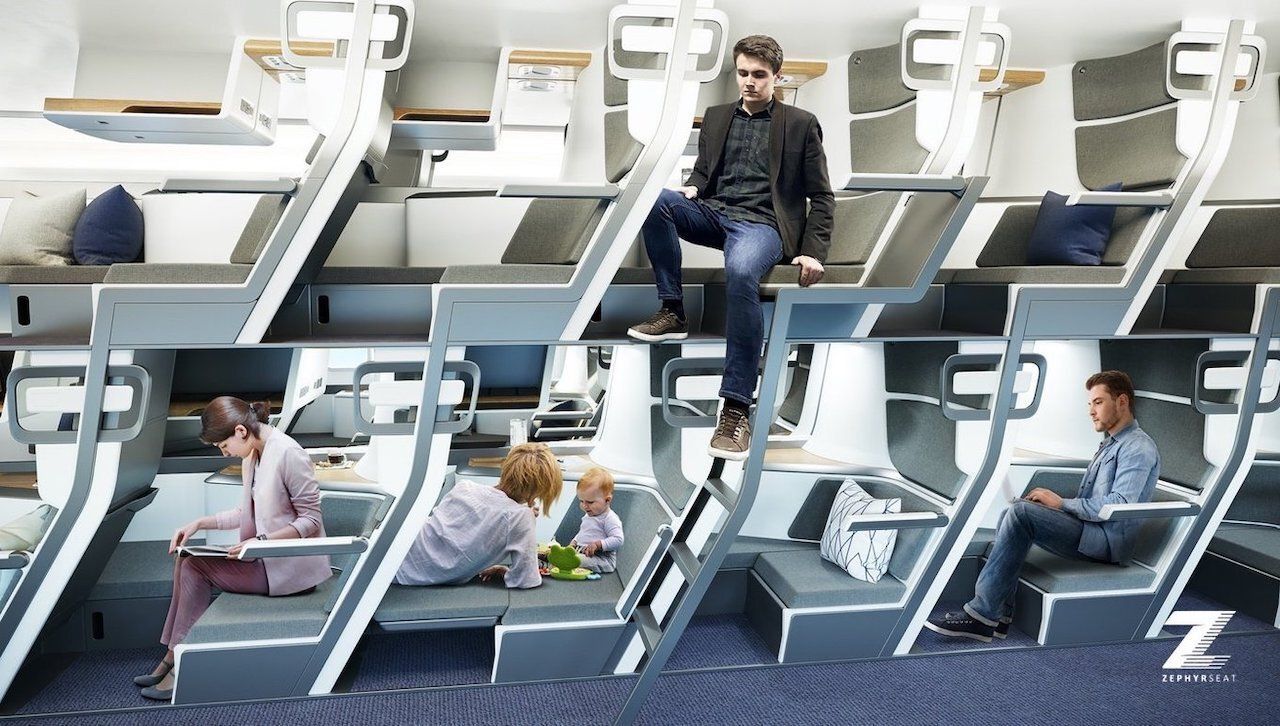
Photo: Zephyr Aerospace via Republic
The double-decker bus lets you see cities, and the Double Decker taco is one of Taco Bell’s better creations. The double decker plane seat, though, feels a little off. Designed by Zephyr Seat, the concept enables people to sit or lay down. The top bunk is about four and a half feet up, and, obviously, there is no overhead bin. Stacking people vertically worked for increasing the density in cities, so why not planes? Having space to lie down would quickly make us forget about the inconvenience of climbing up and down a little ladder whenever we needed to use the restroom.
5. The new normal, but newly awkward

Photo: Aviointeriors
The first COVID-era seat design to really make a splash came from Aviointeriors — from the same Aviointeriors that came up with Skyriders 2.0. The idea is that if it’s so precarious to be face-to-face and side-to-side with others, why not just separate everyone with dividers? To accomplish this, Aviointeriors came up with a concept that turns the middle seat so it faces the back of the plane and then wraps plexiglass in a double “s” shape around the aisle, middle, and window seats. It’s called Janus, after the two-faced Roman god. It has issues.
First, there’s the weight problem. Airlines are having a hard enough time resisting the temptation to put someone in a middle seat, so it’s not likely they’re going to add on a bunch of extra material that increases total weight and therefore fuel costs. Second is the issue of facing backwards. It works on a train or a bus, but is much trickier on planes. Take-offs would mean the middle seat person feels like they’re constantly being pulled down instead of pushed into their seat. There are third, fourth, fifth, etc. issues out there as well, but those two alone put it near the bottom of the ranking.
6. Standing “seats”
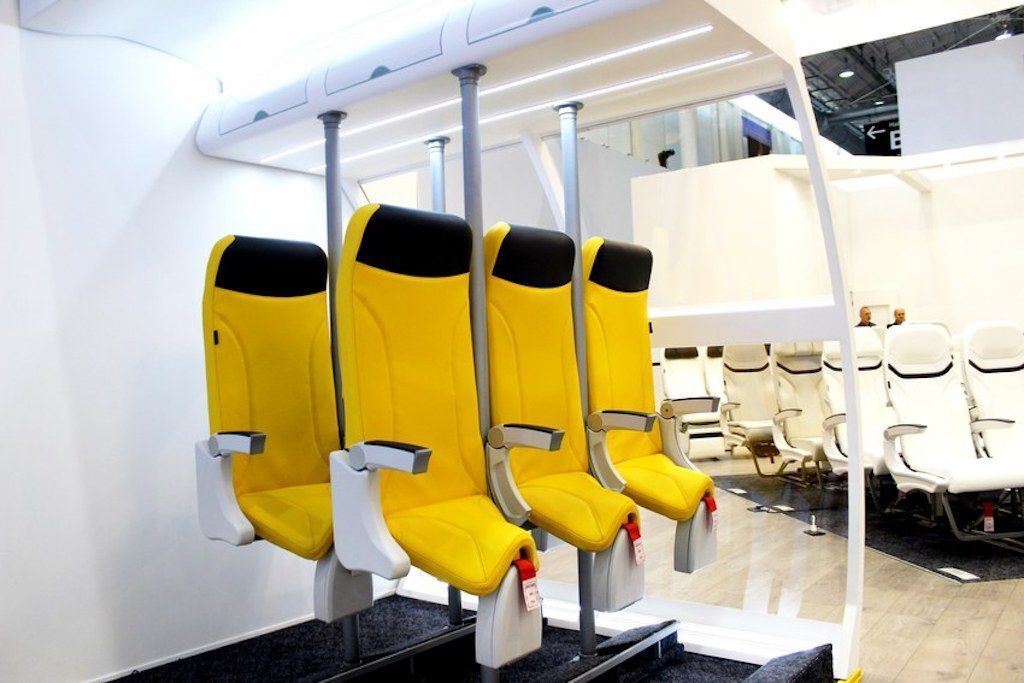
Photo: Aviointeriors
A design that turns “seats” into places for people to stand sounds like something out of the Twilight Zone. It is not a seat if you’re standing. Skyrider 2.0 has people stand with what is essentially a long backrest that you strap into like you’re on a shoddy Gravitron at the county fair. Airlines can take my complimentary meals and charge us extra for the aisle, but airlines cannot turn our seat into a standing backrest and still call it a seat.